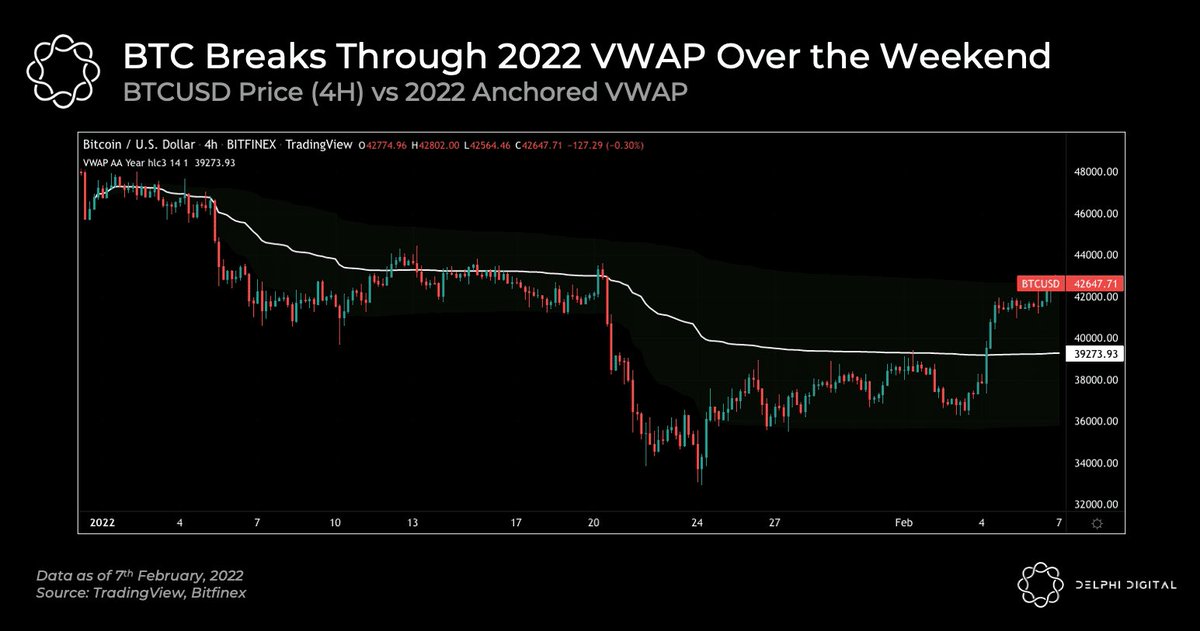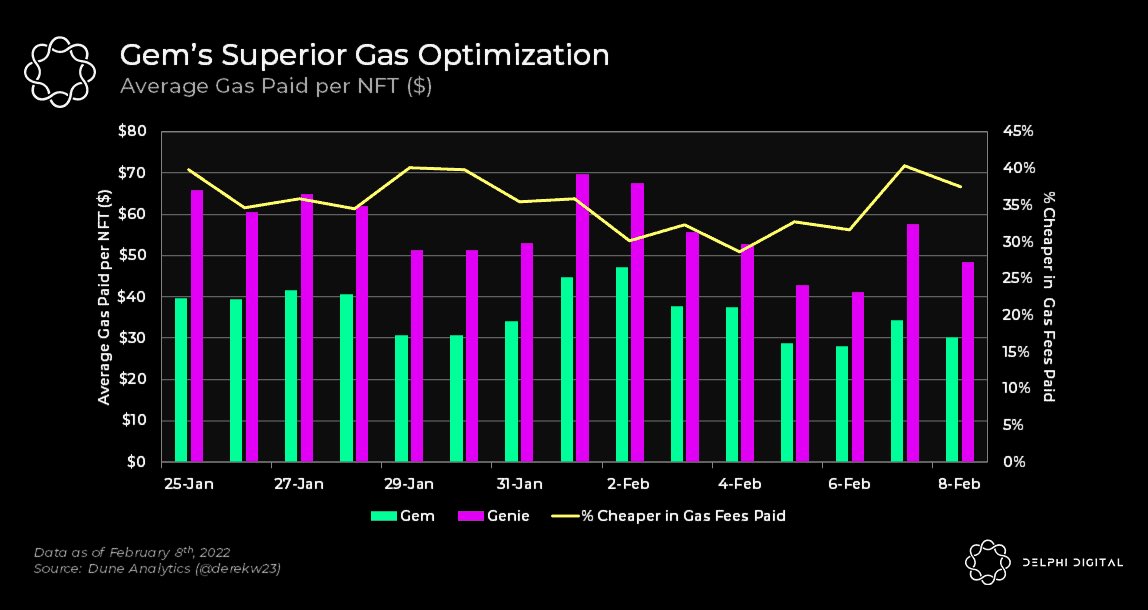
0/ What platforms are leading the L2 TVL charge?
In today’s Delphi Daily, we examined #bitcoin breaking through key resistance levels and TVL of L2s and options protocols.
For more 🧵👇
In today’s Delphi Daily, we examined #bitcoin breaking through key resistance levels and TVL of L2s and options protocols.
For more 🧵👇

1/ Over the weekend, Bitcoin rallied through the $38.5k and $39-$41k resistance levels we had been watching.
The 2022 yearly VWAP (pictured above in white) was acting as a key resistance level. With Bitcoin now trading around $42.5K, the VWAP was breached convincingly on Friday.
The 2022 yearly VWAP (pictured above in white) was acting as a key resistance level. With Bitcoin now trading around $42.5K, the VWAP was breached convincingly on Friday.

2/ TVL on L2s has risen back to levels seen at the beginning of the year (~$6bn)
This growth is driven primarily by @Aribtrum and @MetisDAO.
Among the seven largest L2s by TVL, only Arbitrum (+19% YTD) and Metis (+94% YTD) have seen positive growth in 2022.
This growth is driven primarily by @Aribtrum and @MetisDAO.
Among the seven largest L2s by TVL, only Arbitrum (+19% YTD) and Metis (+94% YTD) have seen positive growth in 2022.

3/ TVL in option protocols has dropped across the board since the start of the year, with the exception of @Opyn_
The drop is likely attributable to falling asset prices. Lower asset prices result in poor performance for put-selling vaults causing investors to withdraw capital.
The drop is likely attributable to falling asset prices. Lower asset prices result in poor performance for put-selling vaults causing investors to withdraw capital.

4/ Opyn’s growth in TVL was an outlier to other options protocols. This can be attributed to their new product SQUEETH, a new financial primitive.
Trading volume of SQUEETH has risen steadily over the past month, but its take-up rate hasn’t been outstanding.
Trading volume of SQUEETH has risen steadily over the past month, but its take-up rate hasn’t been outstanding.

9/ Crypto moves fast. Delphi has you covered. Sign up here to get Delphi's free daily newsletter delivered right to your inbox every weekday
delphidigital.io/daily/
delphidigital.io/daily/
• • •
Missing some Tweet in this thread? You can try to
force a refresh















